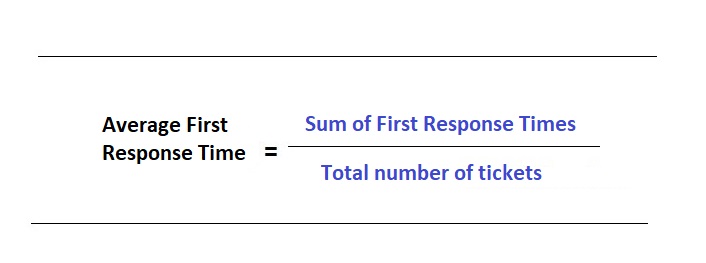
Customer Support KPIs help you measure the quality of service you are providing to your customers. This is a very key metrics that indirectly relates to other KPIs like Customer churn, Customer Retention, CSAT etc. Using the Customer support metrics, you can identify areas of improvement in service quality, bottlenecks in operations, balancing workload, improving productivity etc. Your team can also monitor this to assess and optimize their performance. With real-time monitoring, you can know when the ticket volume increases and you can act instantly before it becomes a crisis.
Always remember customer support is the backbone of your business, if it isn’t tracked properly, you will be left with potentially dissatisfied customers who might churn from your organization.
What are the key Customer Support KPIs that have to be tracked?
First identify your support objective. Define measurable goals that will help you achieve those objectives. Discussing below are few important Customer support KPIs that need to be tracked.
First Response Time
It’s the time between the customer opening a support request and the first response given by a customer support executive. This does not take into account any automatic replies generated by the application. This accounts for the time the customer has to wait until a support executive replies or takes up his request. This time is very important as most companies have a service level agreement for this initial response time. Hence the first response from the support executive should reach the customer before this set timeline.
For every customer their issue is urgent and of utmost importance. The faster you respond the more assurance the customer gets that someone is on the issue to help out. Hence the more you make the customer wait, it directly affects the customer satisfaction.

Average Resolution Time
Average Resolution time is a very important metrics. It is the duration from the time the support ticket is opened to the time when the ticket is resolved and marked closed by the support team. The resolution times vary from company to company and it also depends on the complexity of the issues. Hence, as per the industry standards and per your historic ticket resolution effort, identify your target average resolution time.

Aged Tickets
The Customer Support KPI ‘Aged tickets’ are the tickets that remain unresolved, due to a blocker or lack of expertise of the support team. These tickets continue to remain in the open state beyond the age limit set by the organization. The aged tickets are very important, as they are the issues which have been lying open for a long time without providing the necessary solution to the customer. So, these tickets lead to potentially dissatisfied customer. The tickets might be lying open due to pending information from the customer side, nevertheless the support manager needs to investigate that and bring the ticket to a resolution by reaching out to the customer directly or any other suitable methods. For tickets that age due to lack of expertise, the necessary technical assistance or escalation need to be applied.
Every organization can set a limit for aged period, like, all tickets that are not resolved/closed beyond 2 days will be categorized as an aged ticket. If the number of aged tickets is at an increasing trend, it needs to be investigated.

Total Ticket Volume
The Customer Support KPI ‘Total Ticket Volume’, are all tickets that are currently present in the ticket queue. This includes tickets under all status, like open, blocked, pending etc. These are all the customer issues that the team needs to resolve. This metric is useful in identifying all the customers who are in que for a resolution, as well as the workload to plan for the support team. If this count increase drastically it shows some anomaly that needs to be investigated further.

Tracking these metrics are very important for the smooth functioning of the support team. All of these metrices can be mapped with respect to a target defined by the organization. If the metrics falls below this the target, then it needs further investigation into why and who missed the target. There could be many reasons like team negligence, too much volume of tickets, application notification error etc. The right reason needs to be identified and rectified to bring the metric above the target value. It is very important to ensure that your metrics are not falling below your targets. To ensure excellent service to the customers every time, constant and continuous tracking of the customer service metrics is very crucial. There should not be any instance of these metrics falling below the target. Its rightly said:
“We are what we repeatedly do; Excellence then, is not an act, but a habit”.
Hence, by constant monitoring of these metrics make this a habit within the team!


